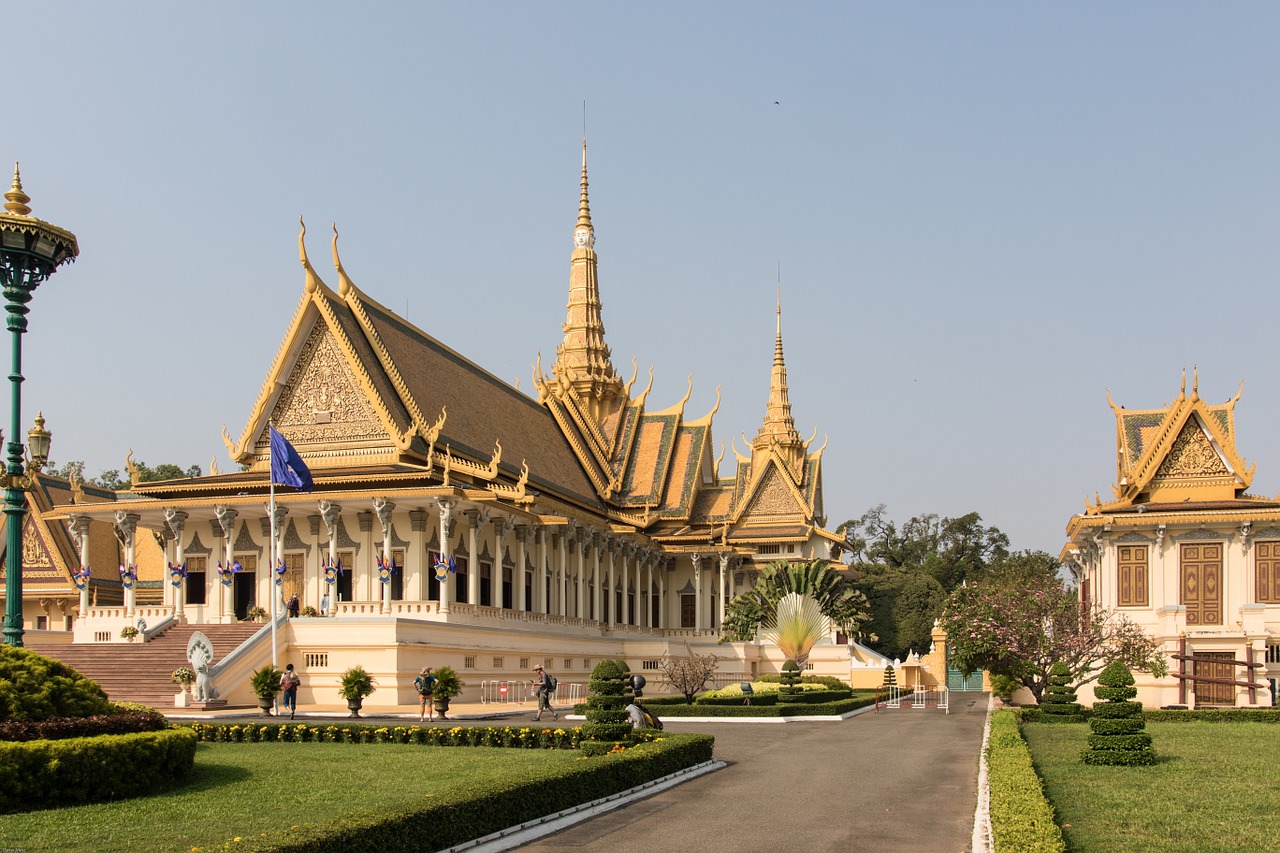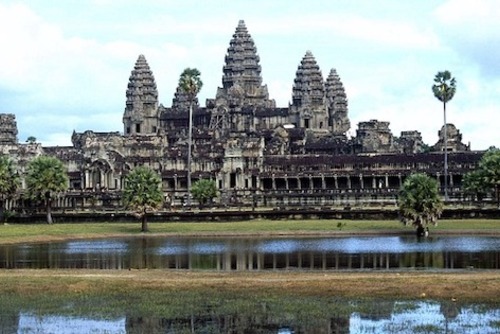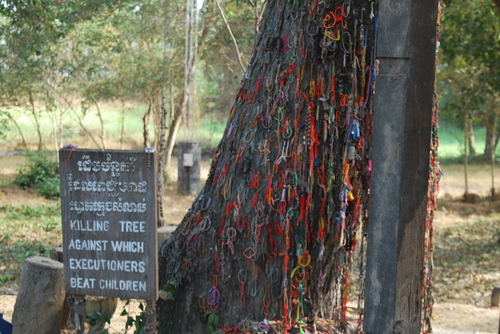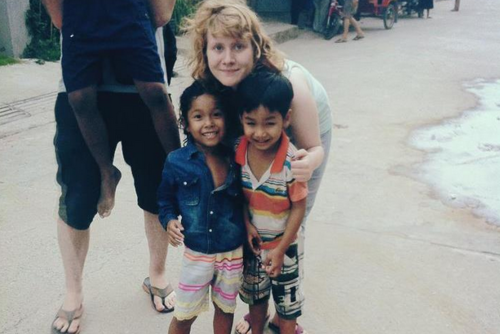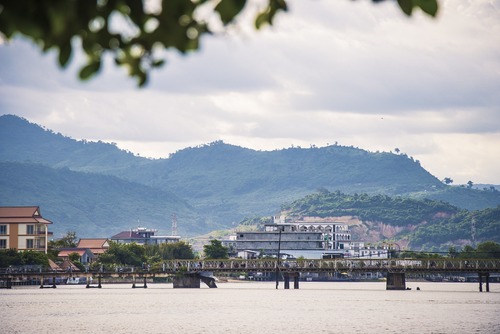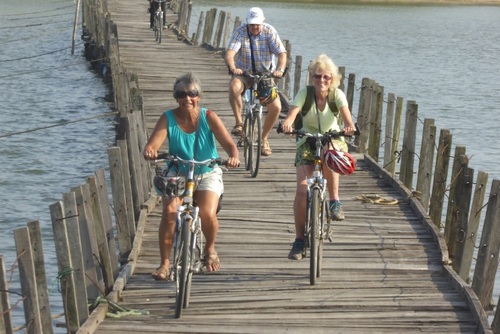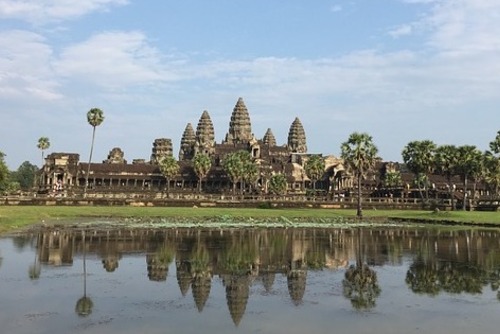Are you wondering what it is like to visit Phnom Penh? Or if it even worth stopping here?
Jack Boad, a traveller from the UK was exploring south-east Asia going overland from Ho Chi Minh City to Siem Riep and wanted to spend a couple of days discovering Phnom Penh.
Here is describes how he maximized his time in a short period and some essential things you need to do in Phnom Penh if you are also planning a short visit.
Arrival in Phnom Penh & Getting Around
After a long and tiresome journey from Ho Chi Minh, Vietnam on the sleeper bus I finally arrive in Phnom Penh, Cambodia. At 6:20am and after 12 something hours on the bus its needless to say the last thing I needed was to face the sea of tuk tuk drivers awaiting me at the bus station.
They remind me of the type of scene you could expect to see in an Indiana Jones movie. Jostling and wrestling for poll position to snatch any business they can from travelers just entering the country. Travelers who are usually too tired to negotiate.
I tell one of the drivers the name of my hostel and I listen to them argue with each other in an attempt, I assumed, to win my business and whisk me off to my hostel.
The argument, it turned out, was actually a debate not about who was going to take me, but who actually knew where my hostel was.
I became aware in my time in Cambodia that Cambodian tuk tuk drivers don't know where anything is. You can more of less show them on a map and still watch two of them argue over how to get there.
Checking In
Fast forward to when I arrive at my hostel and check in. Despite already being fairly drained I know I have a long day ahead as I had plans to leave Phnom Penh the next evening to get to Siem Reap for a sunrise rendezvous with the Angkor temples. This meant that there was little time to waste in exploring the city. Fast forward once again to 6pm - I have actually achieved very little in my days worth of adventuring around the city.
I managed to find a local market and taste some of the local street food and bargain for a couple of new vests. There are some impressive temples too but other than that I found that Phnom Penh was like most other cities in the world - just a city.
I have a strong belief that once you have seen one city, to an extent, you have seen them all. The culture of Asia was there, but unfortunately a hefty dose of the western culture I had been visiting Asia to get away from was beginning to creep in taking away its Asian authenticity somewhat.
That evening I decided to get out and hit the town. Like all cities, Phnom Penh has a thriving night life, if you are able to find it that is. I was and the next morning I was awarded the victory prize of a hangover. I was up surprisingly early but with good reason.
I had plans to see the killing fields today. I had heard stories about what this place was like to visit and was assured that it was the cultural experience of Cambodia that could not be missed if you wanted to truly understand the history of the country's recent years.
Choeung Ek Genocidal Center & Killing Fields
There are lots of activities and things to see and do in Phnom Penh but although harrowing you really need to go to the Killing Fields and learn more about the brutal history of this country. Some Cambodia tours include this in the itinerary or you can just arrive independently.
When I arrived at the Choeung Ek Genocidal Center it immediately had a strange calm to it. A calm that feels peaceful but also at the same time lets you know there is history to be considered. This killing field is one of many sites across Cambodia where large numbers of people were killed and buried in mass graves during the Khmer Rouge regime.
During its rule of the country, 1975-1979, a massive 20,002 mass graves were filled with bodies where it is estimated that anywhere between 1.3 - 2.5 million Cambodians were killed.
Cambodians were arrested and killed if they were suspected of having connections with the former government, foreign governments, was a professional or had a high intellect. The leader of the regime, Pol Pot, is often referred to as the 'Hitler of Cambodia'.
I get my audio guide and begin to walk around the entrance path that leads up to a commemorative stupa filled with the skulls of the victims at the Killing Field of Choeung Ek. I start listening to the tape and it is immediately obvious that this place has a very dark and evil past.
The current state of the grounds are very well kept and it has a real aura of peace, silence and tranquility about it but it is so hard not to see through it and let your mind build a vision of what it must have been like back then.
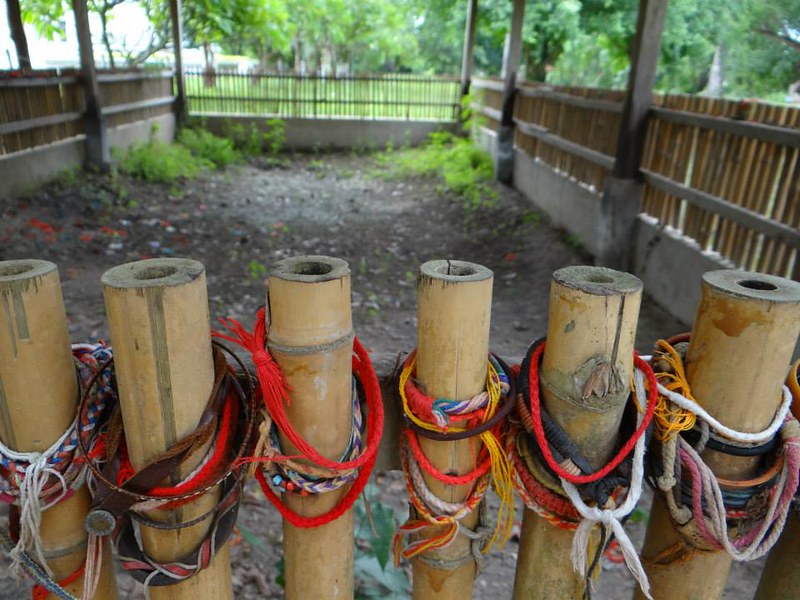
I pass many mass graves and some have fences around them. There are wristbands hung on the fence as a sign of respect from visitors. I put my favorite red band on the fence and just silently stare in numbness as I notice some human bones and teeth that have been unearthed in the soil by the weather.
The audio tape is hard to listen to but it is important that you do. It shares many stories from survivors and explains in detail the horrid way in which prisoners were processed, put to work, and eventually killed. It was like a super efficient production line of human genocide.
I walk around for a good hour. Taking in the scene, the aura, the audio tape and even the smells of the flowers that are now in blossom. I find myself at peace as I walk around respectfully taking this place in. That is until I come across the 'Killing Tree' or Chankiri Tree.
This tree was used by soldiers of the Khmer Rouge regime to kill small children and babies. They would grab them by the ankles and swing them repeatably into the tree until they were dead and simply toss their lifeless bodies into the hole in the ground next to the tree.
You may be asking why children were killed? Surely they were not accountable for being professionals or intellects or having any ties with government, foreign or domestic.
The sick answer is that the Khmer Rouge regime believed that if they were to kill an adult that had children, it was important that the children died so that the children "wouldn't grow up and take revenge for their parents deaths".
The audio tape describes the soldiers laughing as they beat children against the tree. Not to laugh could have indicated sympathy towards the children and in turn made the solider a target of their own regime.
On my way back from the killing fields I become aware of the sad truth of my mornings visit. I saw literally only one senior citizen on the entire trip back to the hostel. It showed just many were killed and that now in Cambodia the oldest generation of people are in fact middle aged.
I took a picture of him and he gave me a big smile. I felt so sad for him. Everything he had been through in his life and he was still able to crack me, a westerner with a so far easy existence, a smile. It put a lot into perspective.
Election Day
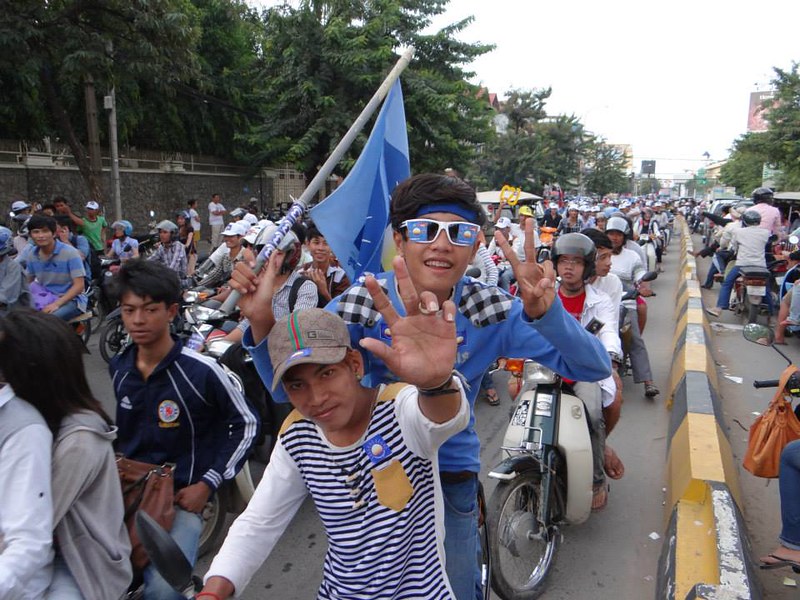
Walking around Phnom Penh I became aware of all the people in blue and white running around in the streets.
It seems that while I walked around the killing fields experiencing Cambodia's past - all the Cambodians were out fixing up their government election booths to try and bring change to Cambodia's future. It was incredible to see.
To think that only 40 or so years ago all these people would have been killed for doing this. They are all shouting, whistling, talking into speakers and waving their arms frantically in support of their chosen party.
The current government in power is the CPP government lead by Hun Sen. This party was looking to win their fourth term in charge of Cambodia. The opposing party was the CNRP party lead by Sam Rainsy. It was clearly obvious that the majority of people in Phnom Penh was supporting the CNRP in hopes for a bigger change to come to their country.
This observation of mine was cemented by the endless waves of people that had caused all of Phnom Penh to come to a standstill leaving my tuk tuk hopelessly stranded in the chaos. I decide to join in. I jump out of my tuk tuk and begin to photograph all the protesters.
They are in awe of it - I think a few of them think I am from the BBC or CNN and they stop for pictures in full costume. Some of them give me stickers to show my support for their party. I go with it as it seems to make them very happy to have a westerner on their side.
I finally manage to make it back to my hostel and get my bags packed. Exhausted and almost unable to take in the spectrum of emotion and celebration I have seen today I jump in a tuk tuk in hopes to make my bus to Siem Reap in time. The city is at standstill.
I am creeping along at 1mph in the sea of motorcycles and scooters all beeping with their riders singing songs for their country. They are so happy to be given this chance to speak out and be heard.
It takes 2 hours to do a 35 minute drive. I would have got out and walked but I was enjoying seeing the celebrations and interacting with the locals too much.
I had many stickers and photos by the end of the ride. I arrive in time for my bus, barely. But not to worry since Cambodians can only vote in their home towns it means hundreds of Cambodians are waiting for the bus too.
The 10pm bus I had booked was going to be very late as due to the surge of people they were just seating the 6:45pm bus. I get talking to a few locals at the bus stop and get their perspectives on the election and how they feel their country has progressed in the last years.
Its all very positive change in their mind and they like the interest of other people and cultures from around the World coming to experience Cambodia.
I feel truly blessed to have witnessed that day in Cambodia. It cemented that country in my heart and made it one of the best experiences of my life and travels to date. I got on the bus two hours later and I can happily report - I made sunrise in Siem Reap.

